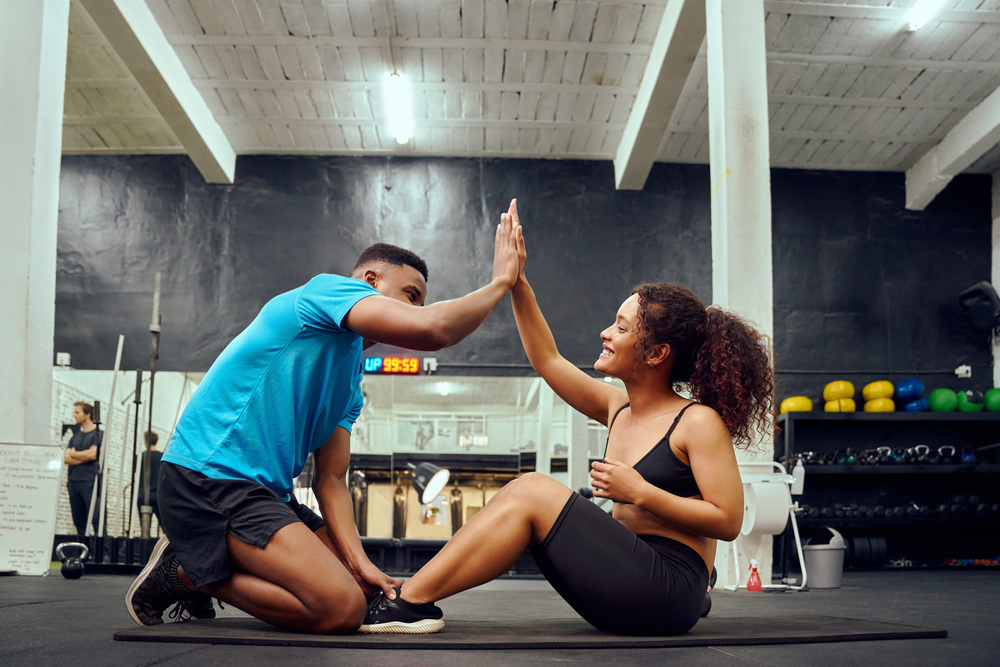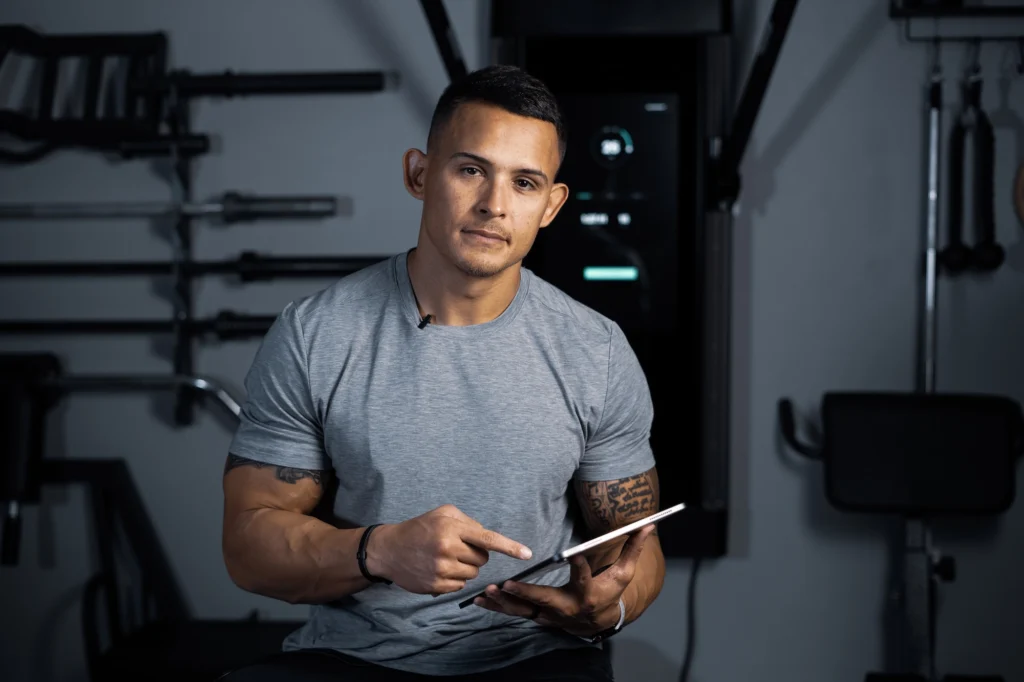How Personal Trainers Should Use AI Tools Like ChatGPT

Personal trainers can use artificial intelligence to streamline workloads and deliver quality programs, provided they master the basics
Artificial intelligence (AI) has swiftly moved from the realms of science fiction to an integral component of daily life. Powered by algorithms and datasets, AI has found applications in many sectors, including personal training.
How can personal trainers use the power of AI to streamline their workloads and deliver quality programs that get the best results? Fitness professionals already have many options to choose from, from basic prompts to AI-powered footwear, and numerous ways to apply the information gleaned.
AI can transform personal training. Yet, it’s essential to understand its advantages and shortcomings.
Benefits of AI in Fitness
Precision: AI analyzes vast data, offering insights that might be missed by trainers.
Efficiency: AI handles repetitive tasks, freeing trainers to focus on human-centric activities.
Adaptive Learning: AI tools learn and adapt, providing solutions tailored to individual needs.
Drawbacks of AI in Fitness
Data Dependence: AI relies on quality data. Flawed data affects accuracy, and even with good data, errors may arise.
Missing Human Element: AI can’t match human empathy, understand personal fitness goals, or offer hands-on guidance.
Emotional Gap: AI doesn’t grasp the emotional reasons behind fitness objectives, lacking the depth to truly comprehend client motivations.
AI Should Supplement, Not Replace
For personal trainers, recognizing AI’s capabilities and limits is key. It should be used as an enhancing tool, akin to gym equipment.
Ted Vickey, PhD, president of FitWell, a management consulting company that specializes in disruptive health technology, says AI won’t replace personal trainers, and notes that “trainers who use AI will be less stressed, make more money, and have more time to focus on what they love – training clients — than those who don’t.”

Vickey, who offers many fitness technology resources for personal trainers, says that if trainers are drowning in spreadsheets, are uncomfortable with selling services or are confused about running and growing a fitness business, AI is an obvious answer.
“Try tools like ChatGPT so you can work smarter, not harder,” Vickey says. “AI tools can act like a life raft, keeping you afloat administratively while helping you navigate the tricky waters of sales. You don’t have to deviate from your passion to excel in your career. You can have it all, but you must be willing to embrace the change.”
Customization for Best Results
AI excels in personalization. By processing client details, understanding unique objectives and adjusting to feedback, AI offers unparalleled customization. Top trainers recognize the ineffectiveness of a one-size-fits-all approach.
“Gone are the days when creating a custom 12-week workout plan was cumbersome, requiring an in-depth review of a client’s history, fitness levels and unique objectives,” Vickey notes. “Now, AI-driven fitness planning rapidly analyzes multifaceted data that includes age, weight, existing health conditions and even past performance metrics. The algorithms are sophisticated enough to consider nuanced details that might be missed in human observation. In less than 30 seconds, you can generate a comprehensive workout plan.”
Fine-Tuning Prompts
For many trainers, assistants like ChatGPT and Claude serve as an introductory tool, providing numerous advantages. By refining specific prompts, trainers can derive a basic framework. Yet, while AI assists, it’s essential for trainers to remain certified and updated in their knowledge.
Tech expert Paul Couvert, who guides businesses in AI utilization, notes that while some may criticize chatbot results, the outcome largely depends on the quality of input — much like nutrition. He suggests the following “prompt formula”:
1. Task: Begin with an action verb detailing the expected result.
2. Context: Provide essential background information, success criteria and setting.
3. Exemplars: Incorporate examples to refine the AI’s output.
4. Persona: Detail the expertise and role you want the AI to replicate.
5. Format: Envision your preferred response style, be it paragraphs, lists or emails.
6. Tone: Indicate the desired response’s tone or style.
AI as a Time-Saver
Carl Hardwick, CEO of OPEX Fitness and CoachRx, says it’s easy for personal trainers to get bogged down with program design, but AI can help.
“AI can design personalized training programs based on specific inputs about the client,” Hardwick says. “By inputting details such as the current fitness levels, limitations, goals and other preferences, AI can generate an initial workout program tailored to the individual’s needs based on the inputs you provide.”
Hardwick says this not only streamlines the process, but also gives the coach an opportunity to get inspired by a different take.
“This allows personal trainers to save time on the logistical aspect of program design and invest that time to build relationships with clients,” Hardwick says.

The Art of AI Prompting
To go a bit deeper, Hardwick shares the following example based on a hypothetical client: A 47-year-old, new-to-fitness male client who has just been diagnosed with hypertension and is 40 pounds overweight.
Define Clear Intentions: Decide if you want recommendations, prescriptions, or feedback from the AI. Be as clear as possible with your prompting.
Personalization is Crucial: The more specific and individualized your input, the better the output. For your 47-year-old client, input details such as his age, fitness level, weight, health conditions, any specific goals or limitations, and any assessment data.
Prompting Quality Matters: Ensure your prompts are well-structured and specific; this will yield the best results. For example: “Design a beginner’s workout for a 47-year-old male, 40 pounds overweight, recently diagnosed with hypertension. The program should focus on weight loss and cardiovascular health. He has 3 days to train in the gym and 2 days to move outdoors. He has access to a full commercial-style gym. This program should be safe for someone with high blood pressure.”
One note on data and privacy: Hardwick says that “AI platforms often value user privacy and do not store personal data. However, it’s still a best practice to avoid using personally identifiable information. Instead, focus on generic descriptors.”
One benefit of an AI-tailored program includes quicker, more precise results. No more second-guessing if a routine is effective. Moreover, by aligning workouts with fact-checked information and a client’s physical attributes and goals, there may be a decreased risk of injury often associated with inappropriate or overly strenuous exercises. Read more about AI prompt structuring.
AI’s Evolution in Personal Training
AI is revolutionizing personal training, from tailoring workout regimens to predicting injuries before they transpire.
For trainers, especially those using video platforms like Zoom, AI can simplify communication. As Hardwick, creator of a free AI tool for trainers, highlights, “Solutions like TimeOS recap consultations, manage notes and even draft follow-up messages, allowing trainers to be fully engaged during sessions.”
Further, Hardwick mentions AI’s potential in deciphering business metrics like profit statements or client feedback.
“A coach can also use AI to assist in daily communication, nutrition, lifestyle and as a tool to analyze client data,” he notes.
Vickey echoes these sentiments, noting trainers prefer actually training over administrative tasks. AI tools can be transformative.
“Consider it a hyper-efficient administrative aid that never stops,” Vickey states, adding that ChatGPT can manage client correspondence, schedule reminders and even aid in attracting potential clients.
Vickey proposes ten key applications for ChatGPT in personal training:
1. Client Onboarding: Draft welcoming notes and service outlines for newcomers.
2. Session Reminders: Frame alerts for upcoming workouts.
3. FAQs: Respond to common queries about workouts, timings or fees.
4. Training Tips: Curate fitness advice for newsletters or social media.
5. Client Check-Ins: Design follow-up messages for client updates.
6. Invoice Explanations: Explain billing details or financial questions.
7. Testimonial Requests: Compose requests for client feedback.
8. Cancellation Policy: Detail your refund and cancellation guidelines.
9. Resource Descriptions: Summarize workout strategies, videos or educational resources.
10. Announcements: Draft notes for crucial updates or service changes.
As AI continues to advance, trainers can anticipate more integrations with wearables, apps, gear, clothing and additional resources.



